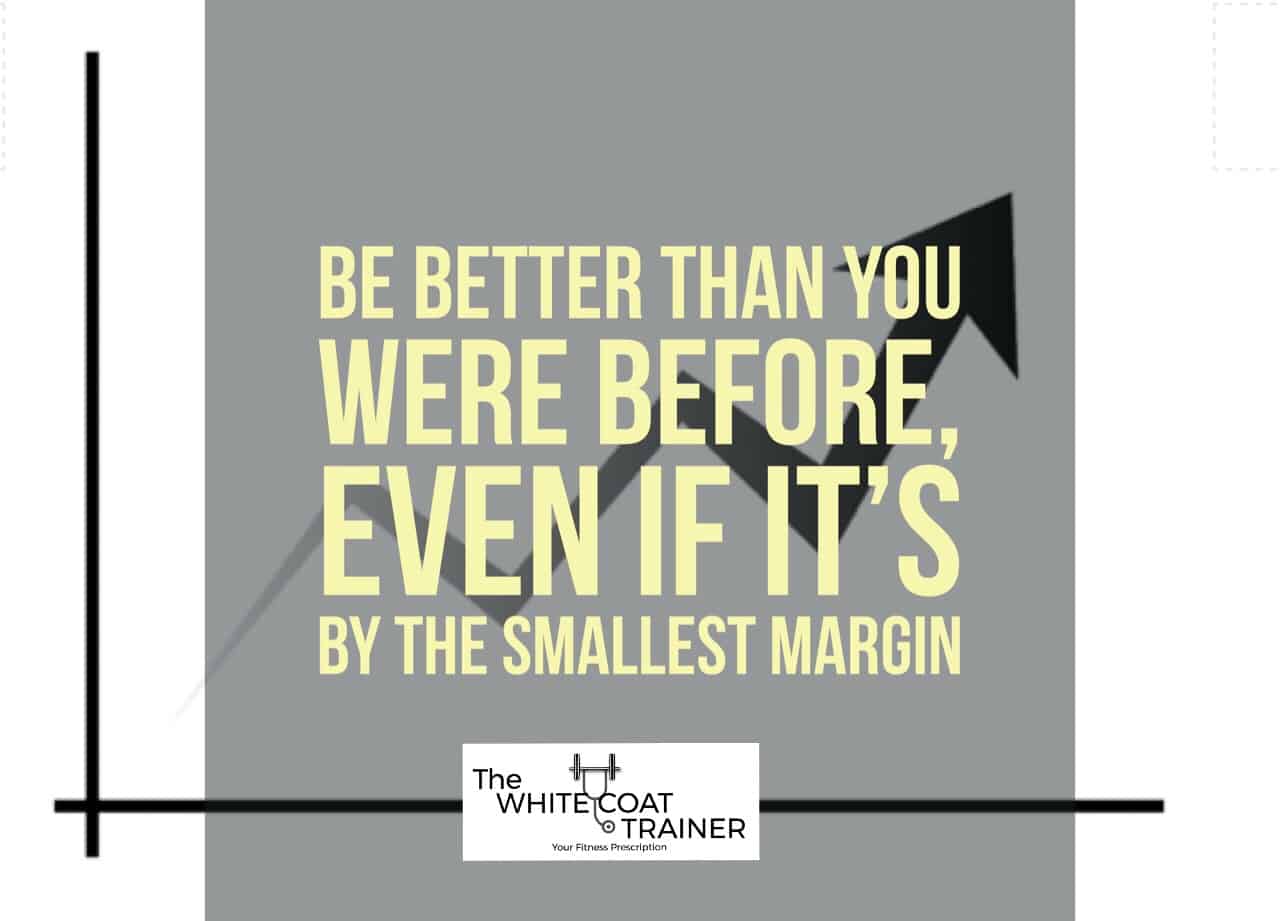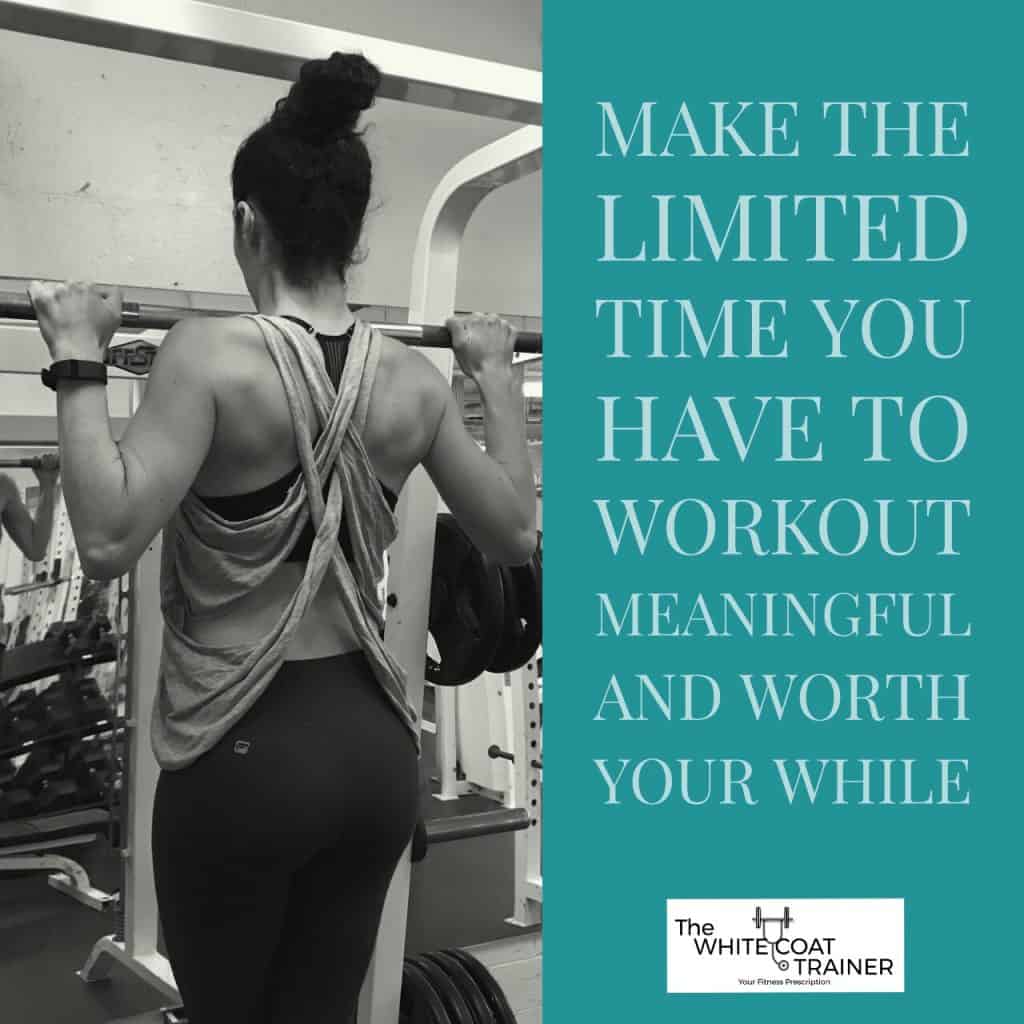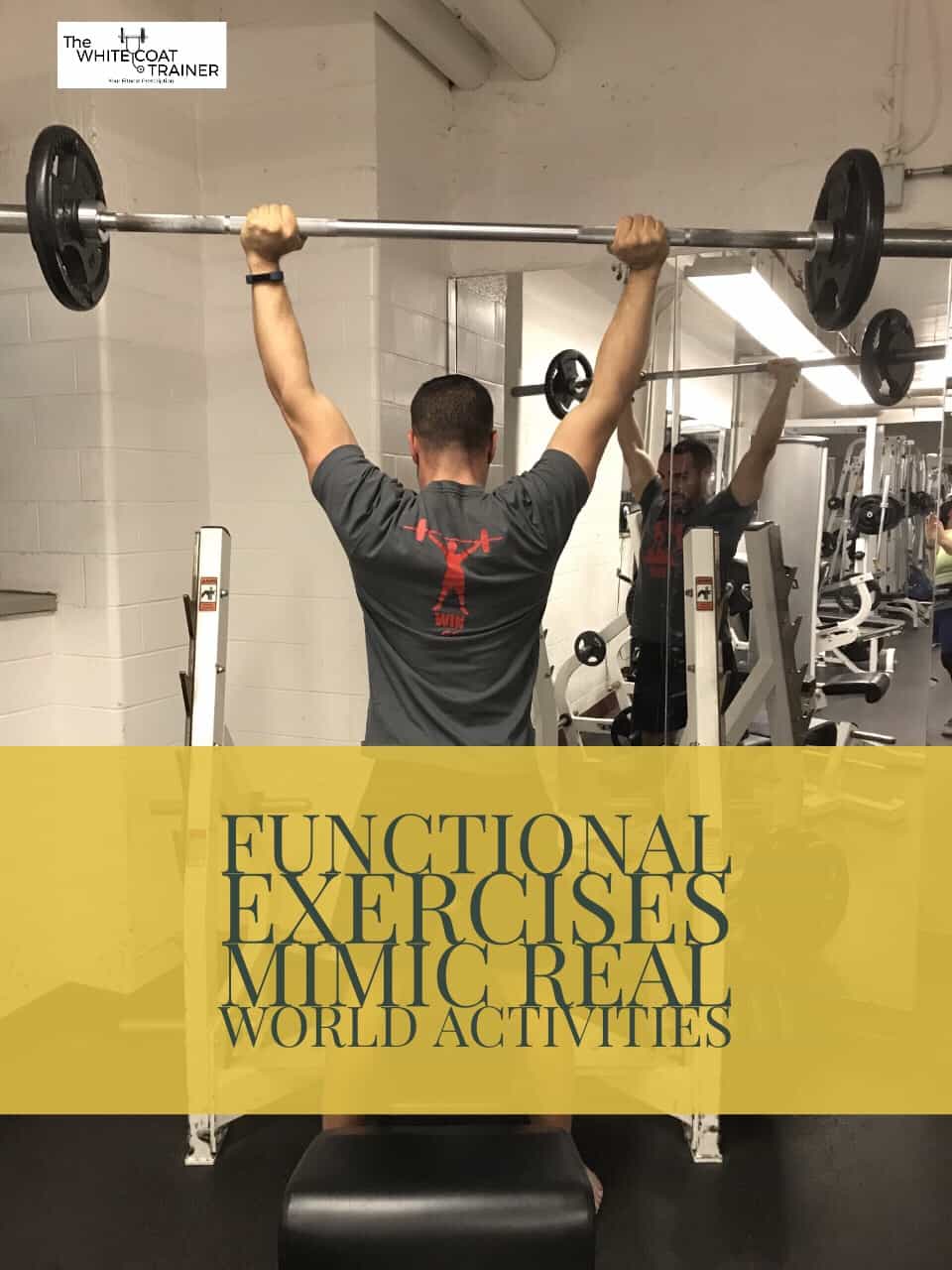If you want to maximize your results, then you need to understand these 3 exercise principles.
After reading this post, you are going to learn why your workout routine needs to incorporate the principles of:
- progressive overload,
- training specificity, and
- recovery / adaptation
Without them, you will be wasting your precious time in the gym.
So if you are ready to learn the 3 principles of exercise physiology, let’s get started.

Why Exercise Principles Are Important To Learn
Exercise is both an art and a science.
This means two things:
- 1) there are things that will work for you, but not someone else, (the art), and
- 2) there are things that will work universally for everyone (the science)
Over the years, exercise science has demonstrated that there are certain principles you should use to maximize the results you get from training. (Brad Schoenfeld has been one of the biggest pioneers leading the research).
The beauty is, there is concrete proof that they work.
You don’t need to reinvent the wheel when it comes to designing your own exercise program.
How Many Principles Of Exercise Are There?
There are numerous principles of exercise that are important to maximize your health and fitness.
Some will say there are 4 principles of exercise.
Others will say there are 7 or 8 principles.
In general, everything you need to know
Instead, this post will condense everything you need to know into just three principles.
Let’s go over them now.
PRINCIPLE #1: PROGRESSION & OVERLOAD
THE PRINCIPLE OF PROGRESSION
The number 1 principle of training is progression.
In order to improve your fitness, you must provide your body with an exercise stimulus that it has not been exposed to before.
The more you do a specific exercise, the better your body will be at handling that stimulus again in the future.
However, if you use the exact same stimulus again and again, the adaptations will begin to diminish over time.
It’s like expecting to get smarter by reading the same 7th-grade textbook over and over.
In order to continue to make adaptations, the stimulus must gradually PROGRESS over time. If the stimulus does not change, your body will not change.
This is a critical concept.
Every training session must have some type of measurable change that makes it different than the one before it.
The changes could be very small; in fact, they should be small. Slow incremental changes in your exercise regime are what will allow continuous progressive adaptations over your lifetime.
How do you make progress?
With overload.

THE PRINCIPLE OF OVERLOAD
Similarly, the exercise stimulus must provide an element of overload.
You cannot expect to lift 2 lbs of weight and get stronger. The exercise must be challenging. The stronger you get, the more you should do.
Don’t get carried away though.
When in doubt, always start light, and overload slowly. You will quickly determine how well your body adapts to the stimulus.
Here is a quick example:
- Let’s say you could lift 100 lbs for 10 reps, and you’re pretty sure you would fail if you tried to get the 11th rep. 100 lbs would then be your 10 rep max.
- Instead of trying to do 100 lbs for 10 reps all the time, you can start with 85 lbs for 3 sets of 10 reps.
- The next time you repeat this workout, you go for 90 lbs for 3 sets of 10, then 95 lbs, and so on.
That’s one example of progressive overload in the realm of strength training.
I go over 10 different ways you can use it in The Progressive Overload Principle [10 Easy Ways To Use It In Your Program].
Starting Strength, which is one of the best exercise programs for novices does a great job of implementing this first principle.
My only gripe with the program is that the workouts can start to get long (>1 hour).
TAKE HOME POINTS
- In order to make successful progress towards your fitness goals, you must continue to provide your body with a new progressive stimulus.
- Each training session should have a small, yet measurable change from the prior session
- The exercise stimulus must be challenging but should allow for continuous overload with time.

PRINCIPLE #2: TRAINING AND SPECIFICITY
THE PRINCIPLE OF TRAINING VS WORKING OUT
The next principle of exercise physiology you need to understand is the concept of training versus working out.
This is a critical difference that you must understand.
Many people go to the gym and just ‘work out’- aimlessly performing a random assortment of exercises in an unscheduled manner. There is no plan and no specific reasoning behind the workout.
Don’t do this.
If you want to make your goals a reality, you cannot just ‘wing it.’ You need to have a well-thought-out plan that will get you closer to your pre-defined goal.
You can’t just work out. You must train.
Training is when you specifically work at something to accomplish a well-defined goal.
Therefore, it is important to specifically identify what your goals are. As with any other goal in life, fitness goals should:
- Be as specific as possible,
- Be given a deadline,
- Be realistic
- and most importantly, be distinguished from a target.
What is the difference between a goal and a target?
There is a huge difference between a goal and a target.
“I want to lose 50 lbs” is not a goal, it is a target.
Why?
Because you actually don’t have much control over whether or not you lose 50 lbs.
But you do have absolute control over the goal you set to get there.
So what would be the proper goal?
A proper goal would be, “I will go to the gym four times a week for 6 months while cutting down alcohol consumption to 1 drink/week…. [in an effort to try and lose 50 lbs].“
Do you notice the difference?
You actually have full control over your goal. You may or may not lose 50 lbs, but making a goal that you can adhere to will increase your chances of actually achieving your target.
The other advantage is that you will always accomplish your goal using this strategy.
Once you know what your goals are, then you can set a dedicated training plan to achieve those goals.
This leads me to the second part of this principle – specificity.
THE PRINCIPLE OF SPECIFICITY
The second half of the training principle is specificity.
This specificity principle states that in order to get good at something, you have to practice that SPECIFIC task.
- If you want to get good at running, you need to run more.
- If you want to improve your pull-ups, you have to train the pull-up.
- If you want big biceps, you need to train your biceps.
But what if your goal is to improve overall muscular strength and improve body composition?
Then you need to focus the majority of your time performing functional exercises.
What are functional exercises?
Functional exercises are ones that mimic real-world movements. Just think about the activities that we perform on a daily basis:
- we sit,
- we stand,
- we bend down,
- we lift items from the floor,
- we lift items over our heads,
- we reach for items,
- we carry items, sometimes unevenly etc.
These are the movement patterns that we need to train and strengthen-not performing endless sets of bicep curls.
Believe it or not, there exists an exercise that incorporates and strengthens all of these functional movement patterns and more.

By performing functional exercises, you are fostering natural movement patterns that help ingrain useful body positions in the real world.
At least 80% of your time should be devoted to this type of exercise training.
A Quick Word On Compound Vs Isolation Exercises
Almost all functional exercises are compound exercises.
A compound exercise is a movement that trains and strengthens multiple muscle groups at once.
As a result, you get a bigger bang for your buck and a more efficient workout. You can train all your large muscle groups with only a handful of exercises.
If you are a busy individual, I recommend that compound exercises make up the majority of your training to save time and improve focus.
The opposite is an isolation exercise. These movements train a single body part and very rarely resemble anything in the real world.
While isolation exercises do have their time and place, they should only make up about ~20% of your training.
TAKE HOME POINTS
- When it comes to exercise and fitness, it is important to specifically identify what your goals are.
- Know the difference between a goal and a target. One you have complete control over, the other you don’t.
- If your goal is to build muscle and get stronger, dedicate the majority of your time performing functional exercises.
- When in doubt, choose a compound exercise rather than an isolation exercise to train more muscle groups in less time.
PRINCIPLE #3: RECOVERY & ADAPTATION
THE PRINCIPLE OF RECOVERY
Last but not least, the third principle is recovery and adaptation.
While this is not a ‘sexy’ topic – optimizing your recovery is just about the most important thing you can do for your body after an exercise stimulus.
Here’s why:
Exercise is naturally a catabolic process. This means that your body has to break down and use up a lot of resources while it is exercising.
In order to repair itself, the body must then undergo a process known as anabolism. Without anabolism, there is no adaptation, and there is no progress.
The first step in optimizing anabolism is adequate nutrient intake. It should go without saying that you must consume an adequate amount of protein throughout the day to reap the full benefits of exercise.
The best high-quality protein sources are:
- Pasture-raised chicken
- Grass-Fed Beef
- Wild-Caught Fish
- Free Range Eggs
- Green Split Peas
- Lentils
- Edamame
- Hemp Seeds
- Tofu
- Protein Powders
You must consume AT LEAST 0.5 g of protein per lb of body weight per day.
In addition, you should aim to consume half your body weight in ounces of water to ensure that your body is adequately hydrated. Not fruit juices, not soda, not coffee, water!
The second most important piece of optimizing recovery is sleep. Sleep is only the third most important human function after eating and pooping. Too bad so many people don’t treat it as such.
Best of all, sleep is free.
You must make an effort to get at least 7 hours of sleep every single night. Any less than that and you are impairing your fitness progress.
To get a full detailed breakdown of how to recover from exercise, check out How To Boost Your Post Exercise Recovery [& Relieve Your Sore Muscles].
THE PRINCIPLE OF ADAPTATION
Last but not least, you need to give your body time to recover and adapt to the training stimulus.
In general, you should wait ~48 hours before training the same muscle groups again. It is during rest that training adaptation occurs.
For example, here is a training schedule that allows ample recovery time between training sessions.
- Day 1: Train the muscles of your upper body
- Day 2: Train the muscles of your lower body
- Day 3: Light aerobic exercise
- Day 4: Train the muscles of your upper body
- Day 5: Train the muscles of your lower body
- Day 6: Off or light aerobic exercise
- Day 7: Off
It should also go without saying that none of these principles work without consistency.
You need to find a routine that is sustainable for you so that you can experience the beneficial effects of exercise.
TAKE HOME POINTS
- Adaptation cannot occur unless you properly recover from the exercise stimulus
- Consume high-quality protein and water every single day
- Sleep at least 7 hours a night to let your body go into anabolism
- Allow for an adequate amount of time between exercise sessions (24-48h) for optimal benefit
Other Related Questions
What Is The FITT Principle?
The FITT principle is an acronym that stands for
- Frequency,
- Intensity,
- Time, and
- Type
It is designed to help you understand what things you should focus on when designing your workout program.
In other words, it’s another way of re-stating the 3 principles laid out above.
Frequency is how often you exercise: Which encompasses the principles of recovery and adaptation (you need to expose your muscles to a stimulus frequently but not so frequent to impair recovery)
Intensity is how hard you exercise: Which encompasses the principles of progression and overload, (you need to expose your muscles to an adequately challenging stimulus to induce muscle strength)
Time is how long you exercise for (aka duration): Which encompasses the principles of recovery and adaptation (you should exercise for at least 30-90 minutes, but not so much that you can’t recover from it)
Type is the actual workout you do: Which encompasses the principles of training and specificity (what specific fitness goals do you actually want to get better at?)
Do These Principles Apply To A Home Exercise Program?
Yes, you can use all of these principles of fitness and apply them to your own home exercise program.
If you want to get started with home workouts, check out Calisthenics For Beginners: [How To Get Started].
An Effective Exercise Program Using These Key Principles of Training
Now that you understand the 3 most important principles in fitness, it is time to implement them into your own training.
That is why we have created a comprehensive strength program that does all of this for you. We show you what exercises to do, how often, how much weight to use, and how many reps and sets you need to get the best results.
Best of all, it allows for individual differences by giving a male and a female template and allowing you to substitute exercises that work well with your body.

That’s not all. The WCT exercise routine is designed to only take 35 minutes out of your day.
Check out our Program here.
Final Words On The 3 Basic Principles Of Exercise
To improve your current fitness levels:
- Your training program works best when you progressively modify the stimulus dose in a manner that will get you closer to your specific goals.
- It is ideal to have a training plan to tackle your goals, and your exercise selection should include high yield functional exercises that mimic real-world movement patterns.
- Make sure to give your body the building blocks and time it needs to restore and adapt to the exercise you impose on it.
Now I want to hear from you.
What type of training will you use these principles for?
Which one can you improve?
Comment below and let us know.
Next, you should read:
- How To Start Working Out Effectively and Efficiently [The Ultimate Guide]
- The Best Compound Gym Exercises [To Get The Biggest Bang For Your Buck]
- The Best Body Weight Calisthenic Exercises [To Start Working Out At Home]

Alex Robles, MD, CPT / Brittany Robles, MD, MPH, CPT
Alex & Brittany Robles are physicians, NASM Certified Personal Trainers, and founders of The White Coat Trainer: a resource dedicated to improving the health and fitness of busy professionals using time-efficient strategies. Their advice has been featured in My Fitness Pal, Prevention, Livestrong, Reader’s Digest, Bustle, The Active Times, and more. Learn more about them here.
